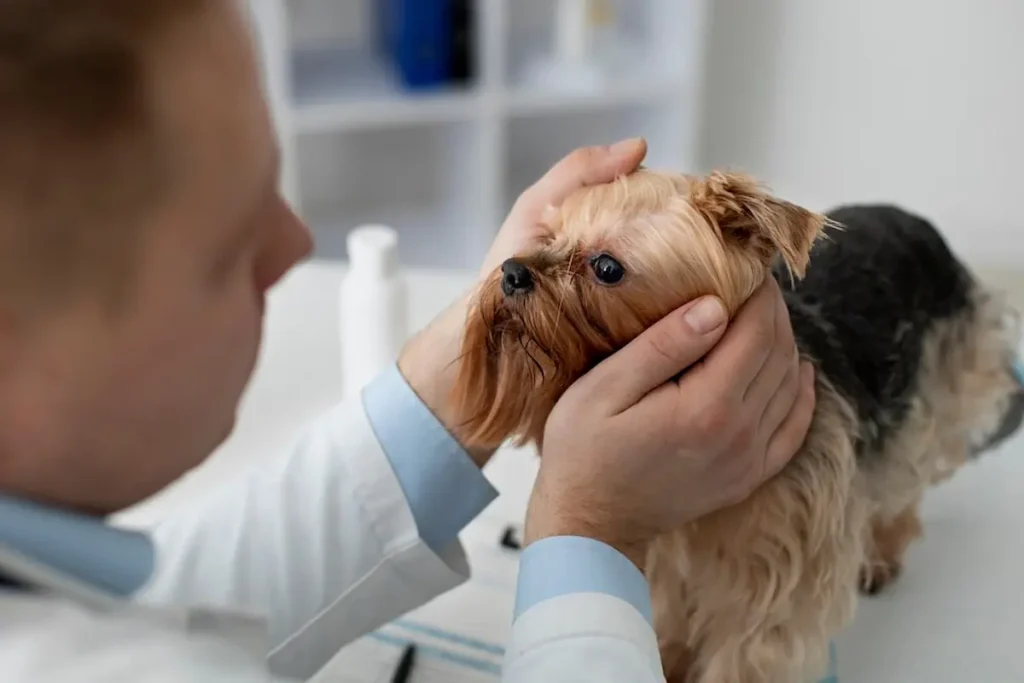Introduction to Progressive Retinal Atrophy (PRA) in Dogs
Progressive Retinal Atrophy (PRA) is a genetic eye disorder that affects dogs, leading to gradual vision loss and eventual blindness. It’s a condition that dog owners dread, but understanding the disease and learning how to manage it can help your furry friend live a full and happy life, even after diagnosis. Let’s dive deep into PRA and how you can support your dog through this journey.
Understanding PRA: What is it?

Progressive Retinal Atrophy refers to a group of hereditary retinal diseases in dogs. The condition is degenerative, meaning it worsens over time, gradually affecting the photoreceptor cells in the eyes. These cells, responsible for detecting light, eventually stop working, causing the dog to lose their vision.
Causes of PRA in Dogs
PRA is primarily caused by genetic mutations, meaning that certain breeds are more susceptible to the condition than others. Both parents must carry the defective gene for a puppy to inherit the disorder.
Related: Dog Eyes Rolled Back: What Does It Mean and Should You Fret?
Breeds Prone to PRA
Many breeds are predisposed to PRA, including Cocker Spaniels, Labrador Retrievers, and Miniature Schnauzers. Knowing your dog’s breed and their genetic risks can help you take early action, including regular eye checks and genetic testing.
Early Signs and Symptoms of PRA

PRA can be sneaky because it starts with subtle signs that many dog owners might miss. But, being aware of early symptoms can help catch the condition before it fully progresses.
Visual Changes to Watch For
One of the first signs of PRA is difficulty seeing at night or in low light. This is called night blindness. Dogs may hesitate to go into dark rooms, or they might bump into objects at dusk or dawn.
Behavioral Changes in Dogs with PRA
Dogs with PRA may become anxious in new or dimly lit environments, or they might start clinging to familiar paths during walks. Their movements can seem more cautious, and they may rely more on their sense of smell and hearing.
Diagnosing PRA in Dogs

If you notice any of the early signs of PRA, it’s essential to visit your vet promptly. Early diagnosis can help you better prepare for your dog’s future care needs.
Veterinary Examinations for PRA
Your vet will conduct a thorough eye examination, looking for retinal degeneration. They might refer you to a veterinary ophthalmologist for further testing.
Diagnostic Tests Used to Confirm PRA
Tests like an electroretinogram (ERG) can confirm PRA by measuring the electrical activity in your dog’s retina. This test is crucial for detecting the disease in its early stages.
Treatment Options for Dogs with PRA
Although there’s currently no cure for PRA, there are several ways you can manage the condition and support your dog’s quality of life.
Managing PRA: Is There a Cure?
Unfortunately, PRA is irreversible. However, with proper care and adaptations, dogs with PRA can still live fulfilling lives.
Diet and Supplements for Eye Health
Dietary supplements, like omega-3 fatty acids, may help slow the progression of PRA. Talk to your vet about adding supplements to your dog’s diet to support overall eye health.
Adapting the Environment for a Visually Impaired Dog
Creating a safe home environment is key. Avoid rearranging furniture, mark steps or stairs with contrasting textures, and use scent markers to help your dog navigate their space more easily.
Supporting a Dog with PRA Emotionally
Dealing with vision loss can be tough for dogs, especially if they’ve always relied on their sight. You can help your dog adjust emotionally with patience, reassurance, and positive reinforcement.
Creating a Safe and Familiar Space
Dogs with PRA thrive in environments where they feel safe and secure. Maintaining a consistent routine and layout at home will help them adjust to their changing vision.
Using Positive Reinforcement for Confidence Building
Rewarding your dog for successfully navigating their environment or responding to commands will build their confidence. This is crucial for dogs dealing with vision loss.
Preventing PRA: What Can You Do?
While you can’t prevent PRA in dogs who carry the genetic mutation, there are steps you can take to reduce the risk in future generations.
Responsible Breeding Practices
If you’re a breeder or considering breeding your dog, it’s essential to avoid breeding dogs with known PRA genes. Genetic testing is a valuable tool for responsible breeding.
Genetic Testing for PRA in Dogs
Genetic testing can identify whether your dog is a carrier of the PRA gene, allowing breeders to make informed decisions and reduce the risk of passing the condition to future generations.
Living with a Dog Diagnosed with PRA
Although the diagnosis of PRA can be heartbreaking, your dog can still live a happy and fulfilling life with a little help from you.
Tips for Owners of Blind or Visually Impaired Dogs
Create a predictable routine, avoid moving furniture around, and use verbal cues to guide your dog through daily activities. They’ll adapt to their new normal, and so will you.
Modifying Training Techniques for PRA-Affected Dogs
Use scent and sound-based training methods to reinforce commands. Clicker training and scent markers can help visually impaired dogs stay on track.
Conclusion
Progressive Retinal Atrophy may seem like a daunting diagnosis, but with the right care and adaptations, your dog can continue to live a rich, rewarding life. As a dog owner, staying informed, being proactive about your dog’s needs, and offering emotional support are the best gifts you can give them during this challenging time.
FAQs
- Can PRA be reversed?
No, unfortunately, PRA cannot be reversed as it is a degenerative condition. - How fast does PRA progress?
The progression of PRA varies but it generally takes months to years for complete vision loss. - Are there genetic tests available to screen for PRA?
Yes, genetic tests are available to screen for PRA, especially for breeds known to be at risk. - How can I help my dog adapt to vision loss?
Create a safe, familiar environment, and use verbal cues and positive reinforcement to help your dog adjust. - Is PRA painful for dogs?
No, PRA is not painful, but it can cause anxiety due to vision loss. - Can PRA affect both eyes?
Yes, PRA affects both eyes, leading to complete blindness over time. - How can I help prevent PRA in my dog?
The best prevention is through responsible breeding and genetic testing to avoid passing on the condition.

